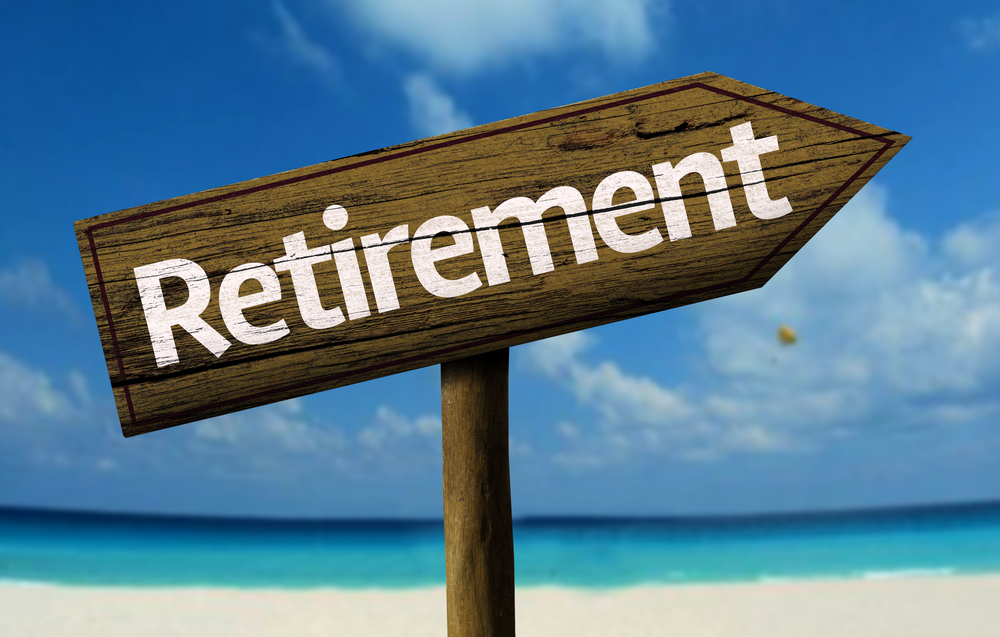LICENSED CPA FIRM | TRUSTED ACCOUNTING PROFESSIONALS

Retirement plans for small businesses
Are you going to have enough money to retire?
Retirement plans for small businesses and individuals, and what you need to know.
What is the best retirement plan for your small business? Am I going to have enough money when I retire? Will Social Security benefits even be around then? As a Certified Public Accountant, these are all questions I hear almost daily. That’s why as a CPA, I frequently suggest and often plead with my clients to open an account that best fits their current financial situation and future goals. So don’t be so quick to pay Uncle Sam come tax time when you can save some of that money for your future and reduce your taxes!
Let’s start with some of the most common retirement plans for individuals and how they work:
Traditional IRA – A traditional IRA (or deductible IRA) is an individual savings plan for anyone who receives taxable compensation. Contributions of up to $5,500 ($6,500 if you’re age 50 or older) are often tax deductible. Any retirement distributions and earnings are taxed when they are withdrawn.
Roth IRA – Unlike a regular IRA, Roth IRA contributions are made after tax (contributions are not tax deductible), but any money generated within the Roth IRA is not taxed again. You can take withdraws you’ve made to a Roth IRA before retirement age without penalties. If you are just starting out and think your income will grow, putting money in a Roth is a great place to invest extra money.
Anyone with a traditional IRA may also convert it to a Roth IRA (Roth IRA Conversion).
401(k) Account – A 401(k) is a workplace retirement account, offered as an employee benefit. This account allows you to contribute a portion of your before-tax paycheck to tax-deferred (you pay tax later) investment account. One of the benefits of contributing pre-tax money is it lowers the amount of taxable income and thus lowers your taxes. Investment gains grow tax deferred until retirement. If you withdraw funds from the plan before retirement age, you will pay a 10 percent penalty and could be subject to federal, state and local income taxes. However, some employers do offer 401(k) loans.
403(b) Account – A 403(b) plan (tax-sheltered annuity plan or TSA) is a retirement plan offered by public schools and certain charities. It’s similar to a 401(k) plan maintained by a for-profit entity. Just as with a 401(k) plan, a 403(b) plan lets employees defer some of their before-tax salary into individual accounts. The deferred salary is generally not subject to federal or state income tax until it’s distributed. However, a 403(b) plan may also offer designated Roth accounts. Salary contributed to a Roth account are made with after-tax money and those contributions and earnings are tax-free when distributed.
Now let’s move on to retirement plans for small businesses. Let’s quickly run down the most common retirement plans for small businesses and how they differ. Please note, three plans stand-out depending on what you want to accomplish with your plan and how much flexibility you need.
Individual 401(k) – The individual 401(k), also known as the solo 401(k), the solo-k, uni-k, or one-participant k can be a great choice for maximizing employer contributions, but it’s only available if you work for yourself or your only employee is your spouse.
The maximum tax deductible employer contribution is 25% of compensation, plus you can make an additional $17,500 in elective salary deferrals (salary reduction contributions by you as the employee) for 2014, up to a maximum of $52,000 per person for the year. If you’re 50 or older, you can contribute an additional $5,500, bringing the maximum to $57,500. If your spouse is also an employee, he or she can also contribute up to $17,500 in salary deferrals (plus a catch-up contribution of $5,500 if age 50-plus). And you, as the employer, can match and deduct from taxable income the contribution up to 25% of salary. That all adds up to quite a significant sum! However, it requires more administration and paperwork and is only available to businesses that employ only the owners and their spouses.
SIMPLE IRA – SIMPLE IRAs (Savings Incentive Match for Employees) are qualified retirement plans for businesses with 100 or fewer employees. They are easy and affordable to administer but offer inflexible employer contributions.
They are funded by elective deferrals (salary reduction contributions by the employees), and generally the employer has to match employee contributions on a dollar-for-dollar basis up to 3% of an employee’s compensation. SIMPLE IRAs contributions are tax deductible and have a contribution limit of $12,000 with a $2,500 catch-up contribution if you are 50 or older.
While your obligation as an employer is less (as you’re only required to make matching contributions of 1% to 3% of employee compensation), the contributions you can make for yourself are also significantly lower than for a SEP-IRA or Individual 401(k), as the business owner is subject to the same contribution limits as employees.
Any contributions by you, the employer, are tax deductible.
SEP IRA – A SEP IRA (Simplified Employee Pension) is a type of traditional IRA best suited for self-employed individuals or small business owners. Any business owner with one or more employees can open a SEP IRA. A SEP IRA can be a great choice for saving a lot and keeping paperwork to a minimum whether or not you have employees. It’s easy to open and lets you make fairly high annual contributions. It also gives you the flexibility to vary contributions or skip them entirely depending on your yearly business cash flow needs.
All contributions are made by the employer, not the employee. And, as an employer, you’re required to contribute the same percentage of an employee’s compensation as you contribute for yourself. That could end up being a hefty sum if you have more than a few employees.
The maximum tax deductible employer contribution is 25% of the employee’s compensation up to a maximum of $52,000 per person for the year.
The bottom line. You should consult a qualified advisor when considering retirement plans for small businesses and individuals. There are many choices available, and it is vital that you understand how your choice could affect your financial situation and your standard of living during retirement. No one plan is the right plan for everyone, so do your homework and seek professional advice before you proceed.




One Response to Retirement plans for small businesses
If a taxpayer certonvs his or her IRA and then dies, the amount of conversion income not previously reported, will be included in the decedent’s final tax return. However an exception is made if the Roth IRA is inherited by the spouse. If the spouse so elects, the spouse can continue to report the conversion income on the same schedule as the decedent would have. This election cannot be made or rescinded after the due date of the spouse’s tax return for the year of the decedent’s death. Roth IRA Conversion AdvantagesThe 2010 Roth IRA conversion may prove beneficial for a number of investors. Assuming tax rates do not drop significantly in the future, the conversion makes a lot of sense. The main advantage of the Roth IRA is its very favorable tax treatment when it comes to distributions. These qualified distributions are tax free, of course, but there are some other Roth IRA conversion benefits:There is no Required Minimum Distribution (RMD) during your lifetime.An IRA conversion to Roth IRA will require the payment of any necessary taxes, but will assist in shrinking your taxable estate. This provides you the opportunity to bequeath the select Roth funds tax free to your heirs.You can choose to not pay taxes on the conversion in 2010 and postpone the taxes in equal shares until 2011 and 2012. Normally, you’d be required to pay all taxes in the year of the conversion.Obviously, the primary advantage of the Roth IRA is its tax-free nature. Having investment earnings completely free from taxation is alluring, but the two following Roth IRA rules must be met in order to receive tax-free distributions:1. The withdrawal takes place at least five years after the initial Roth contribution, and2. One of the following applies:a. The Roth IRA owner is 59 bd or olderb. Disability (permanent)c. Death of participantd. First-time home purchase ($10,000 lifetime cap)